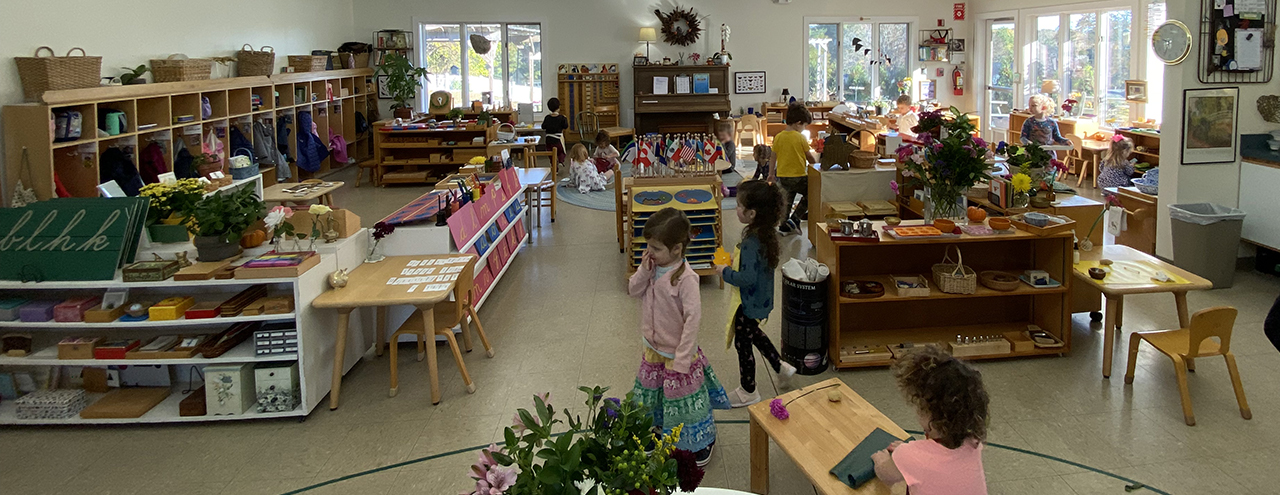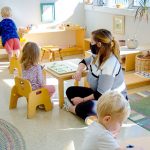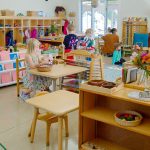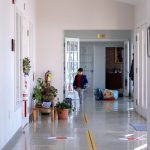
Freedom to choose work is the most distinguishing feature of a Montessori classroom. It can also be the most terrifying feature. Can children do whatever they want in a Montessori classroom?
To understand the importance Montessori placed on freedom in a learning environment, we first have to shed our assumptions about schooling- that we, the adults, need to tell them what to do and when to do it, that all children should be doing the same thing at the same time, or that children need incentive to learn. We need to step back and look at natural development.
Freedom and Natural Development
All life grows and develops as nature guides it and depends on the environment to nurture its needs. Nature drives curiosity in children. It makes them want to actively explore and understand the world around them so that they can become an independent member of society. Our role as educators is to not get in the way and suppress the drive to learn by imposing our will on them.
Instead, we give them the opportunity or freedom to follow their love for learning. Montessori classrooms give children these freedoms:
- to make choices based on their interest
- to work at their own pace without interruption
- to make mistakes and learn from them
- to move and be active
- to socialize and collaborate
When children are free to pursue their interests and choose an activity, they are absorbed into their work, focusing their attention and satisfying a deeper need. You might recognize this when you immerse yourself in an activity that calls to you. Such work is not the result of external pressure, incentives, rewards, or punishments. Instead, it is self-driven and self-motivated. This learning brings the most satisfaction and cannot be achieved without the freedom of choice.
Watching children enter their classrooms and start their day by choosing from a myriad of activities on the shelves is truly captivating. But how do children know what they want to do?
A young child is driven almost unconsciously by nature to activity. When children have the opportunity to practice this self-driven decision-making every day, they develop both self-discipline and self-knowledge as they get older and make more conscious decisions.
The design of the tangible and the intangible environment guides the child not only to physical independence but also to intellectual, social, and emotional independence. With the freedom to choose, explore, repeat, make mistakes, and self-correct, children can achieve not only a deeper understanding of the subject or skill but also engage actively in decision-making, creativity, and problem-solving.
Limits
Yet, as in any organization or society, for the freedom of each individual to be protected, there are boundaries within which the freedoms exist. There are consistent, predictable structures that allow the children to feel safe and authentically free.
- Grace and Courtesy: The limits to individual freedoms are the rights of others. Lessons in grace and courtesy show children how to move within the environment without disturbing others, handle materials carefully, talk with respect and kindness, wait patiently, and care for their environment.
- Presentations: The guides present clear and consistent lessons for how to handle and work with a given material.
- Purposeful work: Every material and activity is orderly and carefully curated to be purposeful and support development.
- Competence: The range of freedom given at any stage depends on the competence shown and the independence gained by the child.
- Limited materials: There are constraints to the number of materials or resources available, which means they have to wait, work together, or choose alternatives.
Responsibility
Elementary children are conscious decision-makers. They are shown that freedom and responsibility go hand in hand and that we each have a responsibility to society, the environment, and ourselves.
- With the freedom to choose work comes the responsibility of understanding that there is work that they can do and there is work they must do. The guide may help the child understand that there is a variety of ways in which to achieve that goal.
- With the freedom to work with others comes the social responsibility of being fair, inclusive, and respectful.
Structures in the environment, such as using work journals and student-teacher conferences, support self-reflection and responsibility. The guides constantly observe children to determine their ability to choose and initiate responsibly. If a child needs help with making a choice, they are shown how to make a choice rather than being told what to do. Great value is placed on supporting the child in finding their drive to learn and making responsible decisions.
Think of a young child who chooses window-washing repeatedly. Through this choice, the child is building confidence in their decision-making, exercising self-discipline, following multi-step directions, and developing coordination, concentration, and attention to detail, all while taking care of the environment. If they spill water and make a “mistake,” they know how to solve it. They can concentrate and take the time needed to complete the work to satisfaction.
For children aged 6 to 12, interest is stimulated by storytelling, opportunities for group work, and activities that stretch the boundaries of imagination and abstraction. Following a lesson on long division, children may get excited about dividing a large number. The fact that they can choose to do this may not have occurred to them if they were always used to someone telling them what they should do. The adult does not limit this drive but encourages and is ready for it. They are free to work together by attaching several sheets of paper, talking, collaborating, and dividing roles. They may take several days to complete the problem. They have devised a creative way to practice, enjoy working, and problem-solving. There is no need here for stickers or grades to incentivize. Their motivation is purely internal.
In a day and age where information is readily available, education is not simply to teach and memorize facts and complete tasks but to develop independent thinkers. By understanding the delicate balance between freedom and responsibility, Montessori classrooms create an environment that fosters the child’s natural love for learning and nurtures individuals who are self-disciplined and self-motivated. They enjoy work, are responsible, and are respectful. These are fundamental skills they will need to be lifelong learners and productive, thoughtful citizens.









